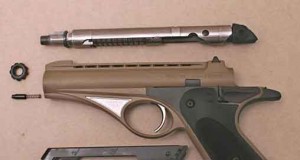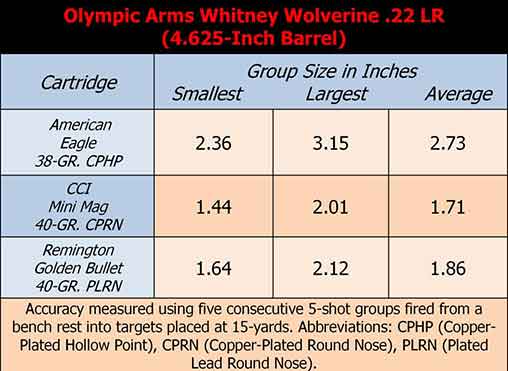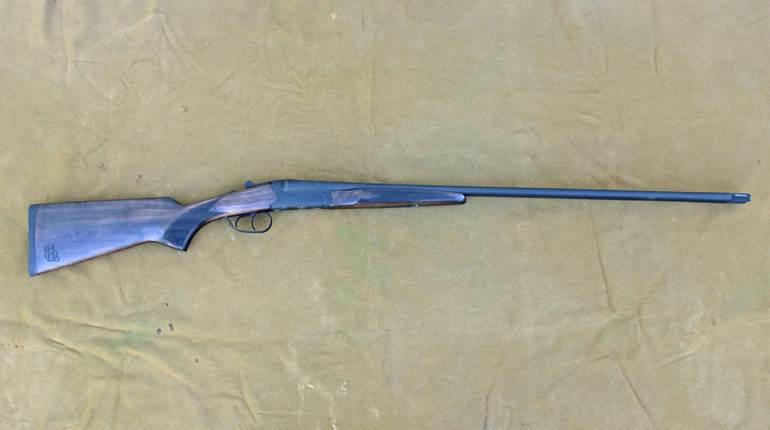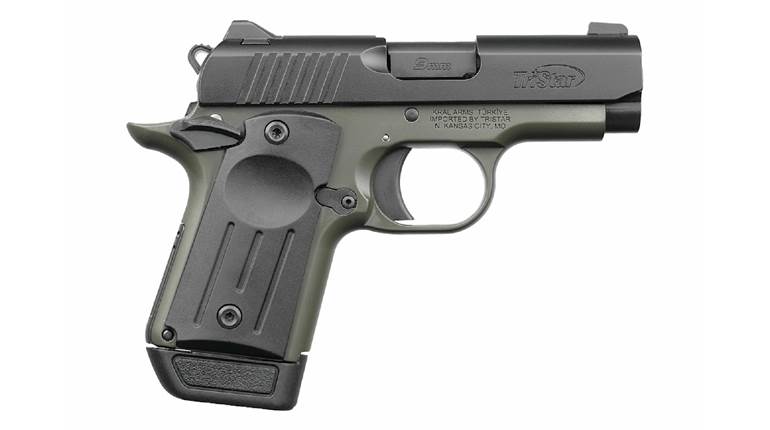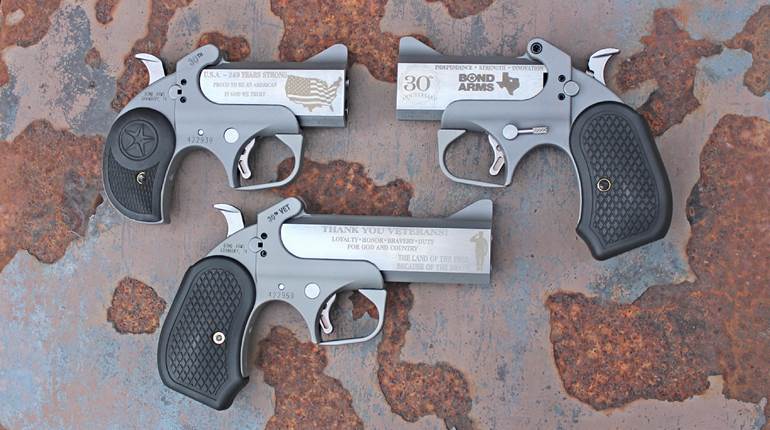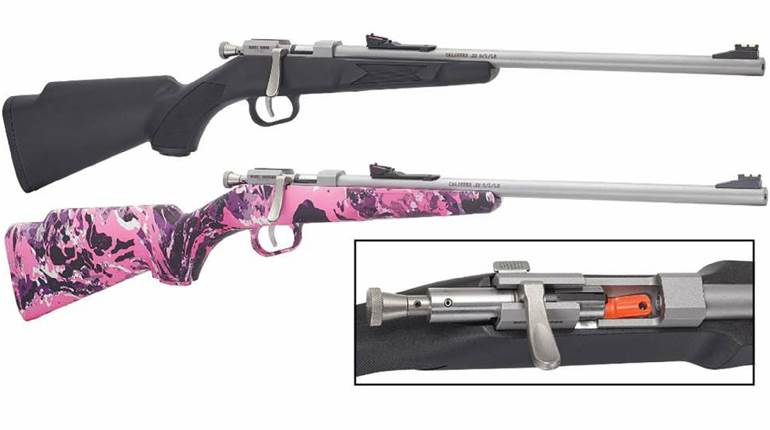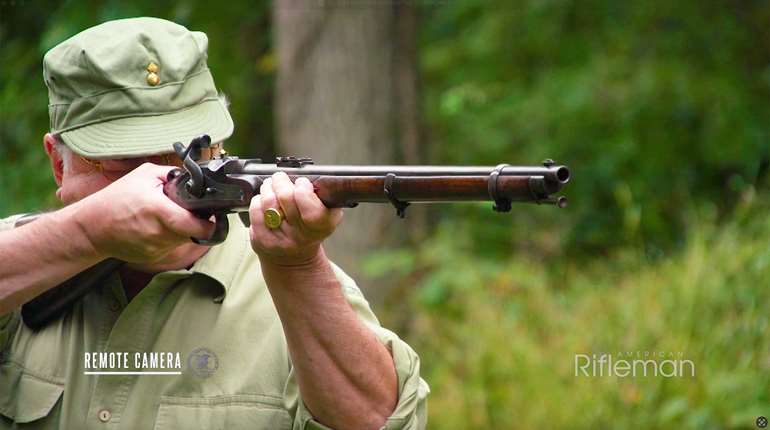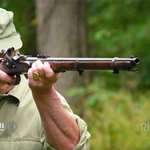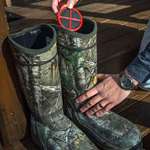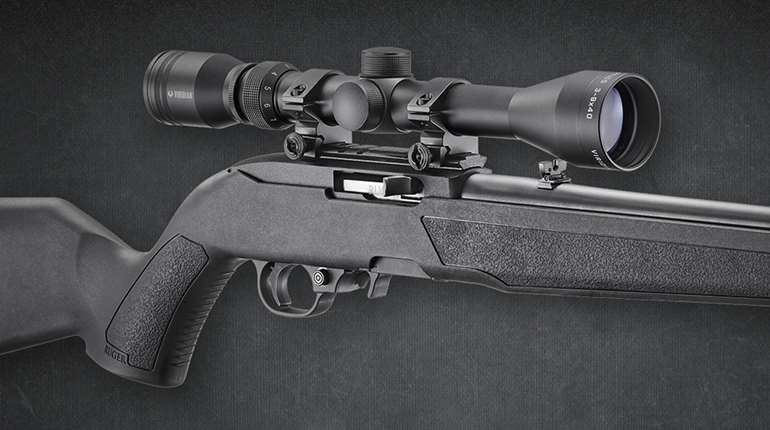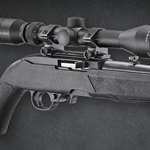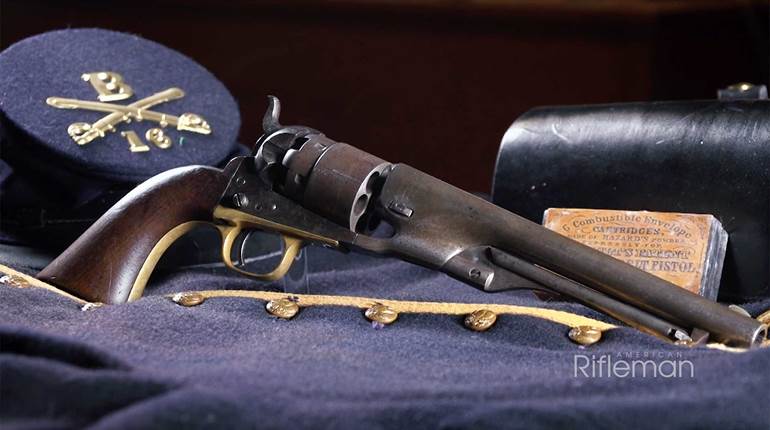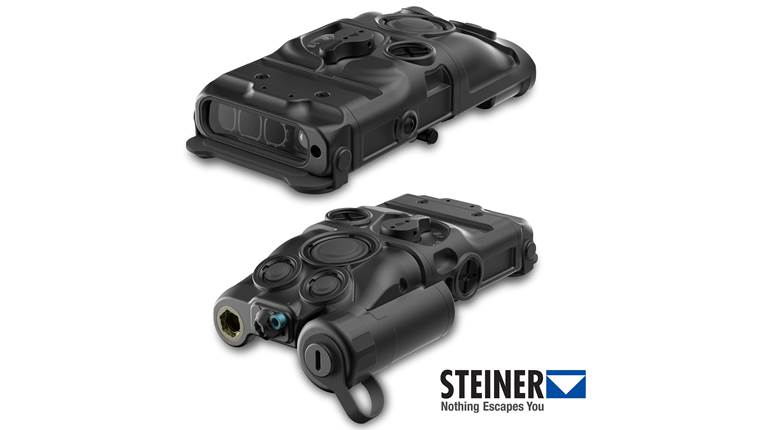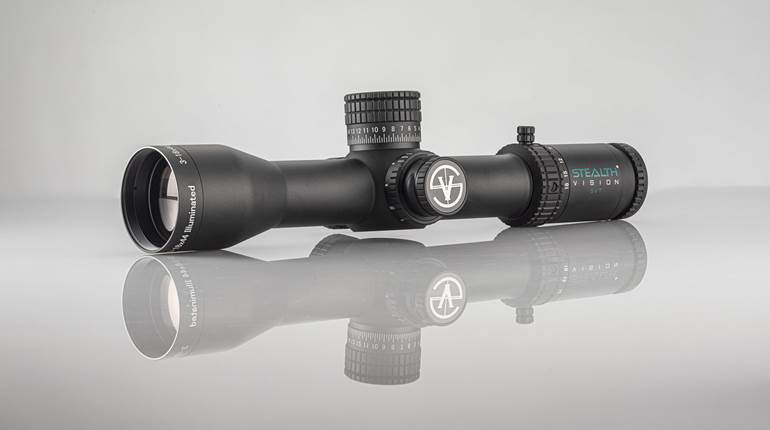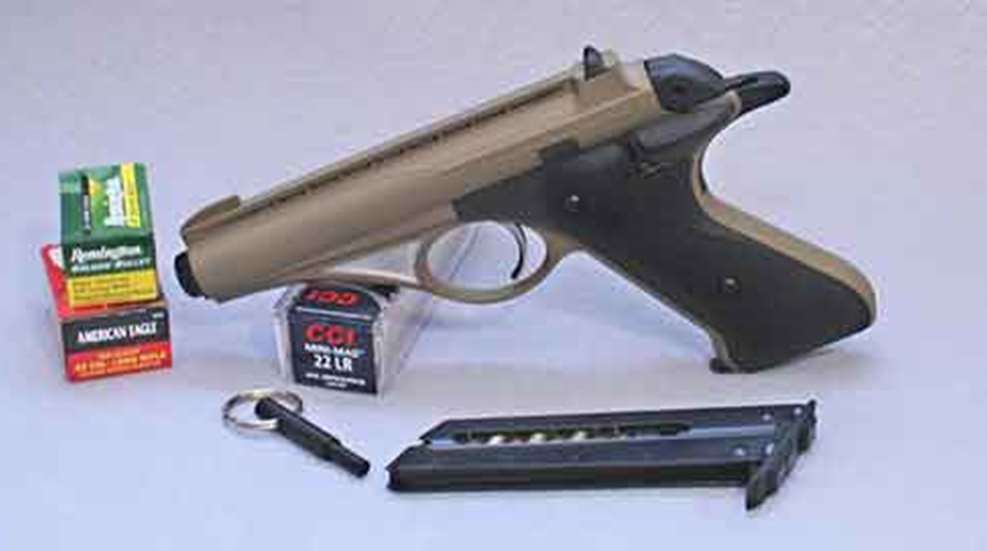
In the early 1950s, firearms designer and engineer Robert L. Hillberg decided to build a lightweight .22 Long Rifle semi-auto pistol using aluminum investment casting to form the frame. Although investment casting is often used to produce gun components today, Hillberg's plan represented an uncommon approach at that time. He gave the pistol the same sleek "space age" lines as the ray guns seen in sci-fi movies and TV shows of that era. The pistol was called the Whitney Wolverine and made available in either a blued or nickel finish with a 10-round magazine.
Unfortunately, due to financial issues and competition from manufacturers like Ruger and Colt, the Whitney Wolverine was short lived. Just over 13,000 were made during the 1956 to 1958 production run. But this pistol was not to be forgotten. In the late 1980s, Robert Schuets, owner of Olympic Arms Inc., started looking into how the Whitney Wolverine could be brought back to the market. Teaming up with Mr. Hillberg, who received one of the first pistols off the line, Olympic Arms successfully launched a polymer-framed version of the Whitney Wolverine in 2004, just over 50 years after the pistol was originally designed.
The most notable feature of the Olympic Arms version of the Whitney Wolverine is its single-piece polymer frame, or shell, which makes up almost the entire exterior surface of the pistol, including the vented rib and front sight. The square-notch metallic rear sight is drift adjustable for windage. An aluminum support, molded into the frame just in front of the trigger guard, is marked with the pistol's serial number. The predominant use of polymer results in a pistol that weighs in at 19.2 ounces unloaded.
The steel barrel and bolt assembly are held in place by a knurled knob threaded on to the muzzle of the barrel. The knob is prevented from rotating by a spring-loaded dent pin. Removing the knob allows the barrel assembly to be removed from the back of the pistol for cleaning.
The Whitney Wolverine is a traditional single-action semi-auto. The exposed hammer rests between two wings of the black metallic cocking handle. Although the hammer lacks a traditional curving spur, the pointed tip of the hammer protrudes above the cocking handle for thumb cocking. A generous beaver tail extension above the grip prevents the hammer from coming into contact with the shooter's hand.
The aluminum trigger has a grooved surface and a generous curve that feels comfortable to work with. After just a bit of take-up, the trigger broke cleanly with 3 pounds 6 ounce of pressure. With the short trigger travel distance, pulling the trigger felt even lighter than the gauge indicated. The thumb safety is located on the left side of the frame. It swings down into the Safe position, and up into the Fire position. When engaged, the thumb safety blocks the sear and disengages the trigger. The pistol also has a magazine disconnect that prevents it from firing when the magazine is removed from the grip.
The grip frame is shaped to make the pistol point naturally and to feel comfortable to the user's hands. The long beavertail extension, the deep curvature at the top of the backstrap, the undercut trigger guard and the steep grip angle all work together to make this pistol feel like an extension of the shooter's arm.
The black, checkered, polymer grip panels are removable and can be replaced by checkered hardwood panels that are available from Olympic Arms. The 10-round blued steel magazines are held in place by a magazine catch located on the heel of the grip. A hole in the magazine followers allows a post-shaped loading tool (provided) to be inserted to pull the follower down for easier loading. If the tool is not handy, then the hole is just the right size for a spent .22 cartridge case to be used instead.
The polymer version of the Whitney Wolverine is one of those pistols I've had my eye on for some time, so I was glad to finally have an opportunity to test it. The Coyote brown version of the pistol was requested for testing. The pistol is also available with a black, tan or pink frame. The fit and finish were excellent for a value-priced .22 pistol with no rough spots, dings, or blemishes. The sights were just the right size for the pistol's purpose and the single-action trigger was light and grit-free right out of the box. The bolt, which does not lock open on the last shot, felt a little rough at the start but it smoothed out nicely as the testing progressed. The pistol’s low weight, excellent grip shape and modest recoil make it a shoot-all-day kind of pistol. Overall, it's a really fun pistol to shoot.
Early on there were some feeding issues as a result of the magazine not being fully seated in the grip, which was an error on my part. There's a bit of resistance when the magazine base comes into contact with the heel catch, which makes the magazine seem as if it is seated. Instead of stopping there, be sure to press on until the audible "click" of the magazine catch engaging is heard.
In the 10-years since its release, the Wolverine has received mixed reviews in regards to its reliability. Some buyers say it runs like a top while other shooters say it can't be trusted. The community commentary about rimfire pistol reliability should be taken with a grain of salt because, on the whole, .22 semi-auto pistols are finicky eaters. I have yet to work with a single make or model that would run reliably with everything it was fed. And so the trick to wringing out a brand new .22 pistol is not so much about running a large volume of one kind of ammunition through it to break it in, but rather to shoot a wide variety of ammunition to find out what the pistol prefers.
The Whitney Wolverine owner's manual states the pistol is designed to fire high-velocity ammunition and that economy ammunition (i.e. bulk box) rounds should be avoided. For this test, 10 varieties of high-velocity ammunition from four different manufacturers were checked for reliable function before the pistol was tested for accuracy, including two economy loads. As it turned out, this diversity of ammunition made a real difference in finding out what the Wolverine could really do.
It was interesting to see how eclectic the Wolverine's tastes were. It was perfectly happy running the bulk-box Federal Premium 38-grain copper-plated hollow points, which meant the pistol could be used for casual plinking. The other bulk load, Winchester’s 555 white box round, jammed repeatedly. As it turned out, the pistol choked up on all the loads I had on hand from Winchester, including top-notch Super X and Varmint HE loads. I don't see this as a point against Winchester since I've seen these loads perform reliably in several other guns I've worked with. However, if the pistol had been tested with only Winchester ammunition, it would have come off looking like a dud. As it was, the pistol ran reliably with Federal, CCI and Remington ammunition.
Once the unreliable loads were eliminated, the remaining rounds were checked for accuracy from a benchrest using 5-shot groups. At 7 yards, all of the brands could comfortably produce groups at or below 1.25 inches. At 15 yards, the groups showed greater variation, ranging anywhere from 1.75 inches up to around 3 inches. At 25 yards, groups tended to either hover right around 3.5 inches, or to open up over 5 inches in some cases. What was interesting to see was that the ammunition's price point was not always an indicator of performance with this particular pistol. Some of the mid-grade loads were among the tighter groups, while some of the high-grade loads wobbled around a bit.
For formal accuracy testing, five consecutive groups with three of the reliably cycling loads were fired into targets set at 15-yards. These included a high-grade, mid-grade and affordably priced load. The single best group of 1.44 inches was produced using CCI Mini-Mag rounds topped with 40-grain copper-plated round-nose bullets. The CCI load also produced the best five group average of 1.71 inches, followed by Remington's Golden Bullet 40-grain plated lead round nose at 1.86 inches and Federal's American Eagle 38-grain copper-plated hollow points at 2.73 inches.
After spending an enjoyable time wringing out the polymer-framed version of the Whitney Wolverine .22 semi-auto, I have to say I'm glad that Olympic Arms not only brought it back, but they did so for an affordable price. The grip feels great to hold, the trigger is light and crisp, and the pistol's unique profile is a refreshing change of pace from the boxy semi-autos dominating the market these days. This rugged, lightweight rimfire is ideal for new shooters, camping, hiking, plinking and for those who appreciate a fun, retro sci-fi blast from the past.
Technical Specifications:
Manufacturer: Olympic Arms
Model: Whitney Wolverine Pistol
Action: Single Action
Caliber: .22 Long Rifle
Finish: Coyote Brown Polymer (Black, Tan, and Pink Available)
Grips: Removable Black Checkered Polymer
Sights: Fixed Blade Front, Drift Adjustable Rear
Barrel Length: 4.625”
Overall Length: 9”
Height: 5.5”
Width: 1.1”
Weight: 19.2 ozs.
Capacity: 10+1 Rounds
Twist: 1:16” RH
Rifle Grooves: 6
Accessories: One Magazine, Magazine Loading Tool, Hard Case, Owner's Manual, Lock
MSRP: $294
